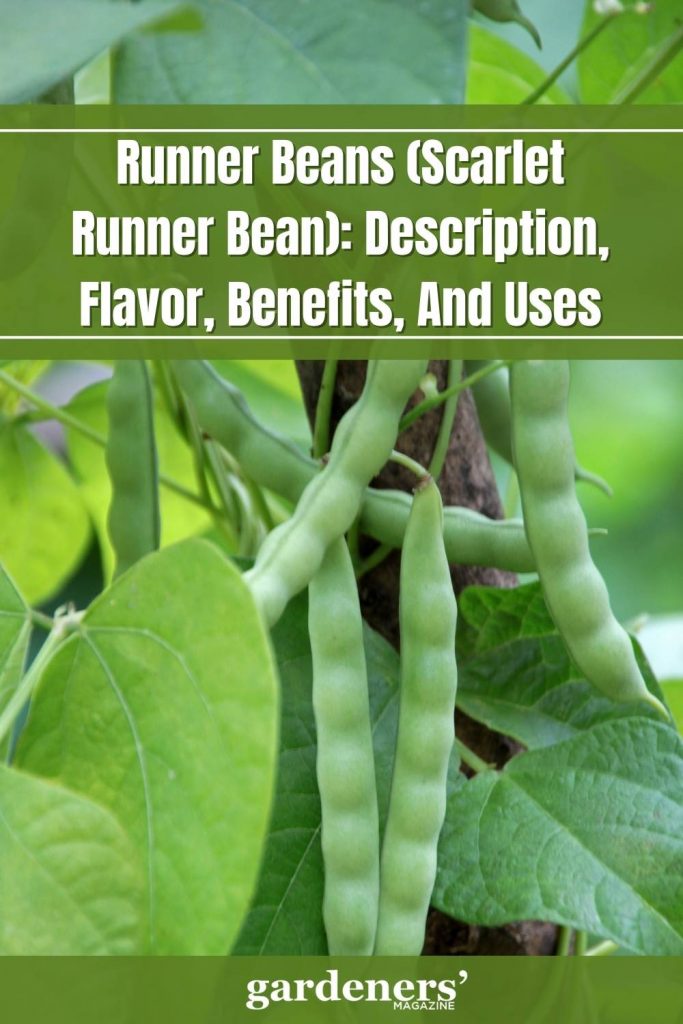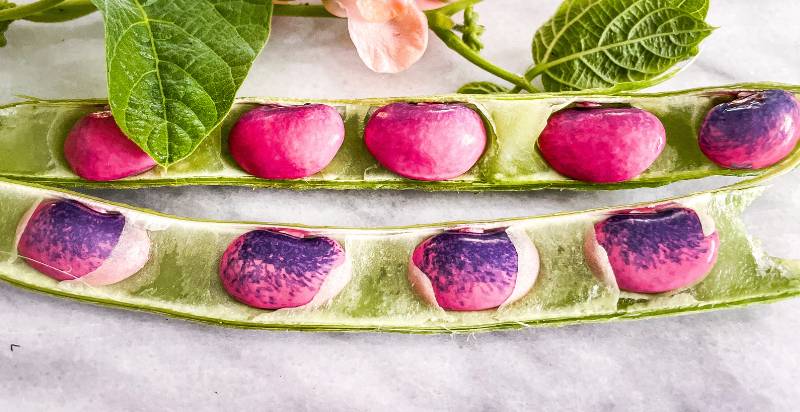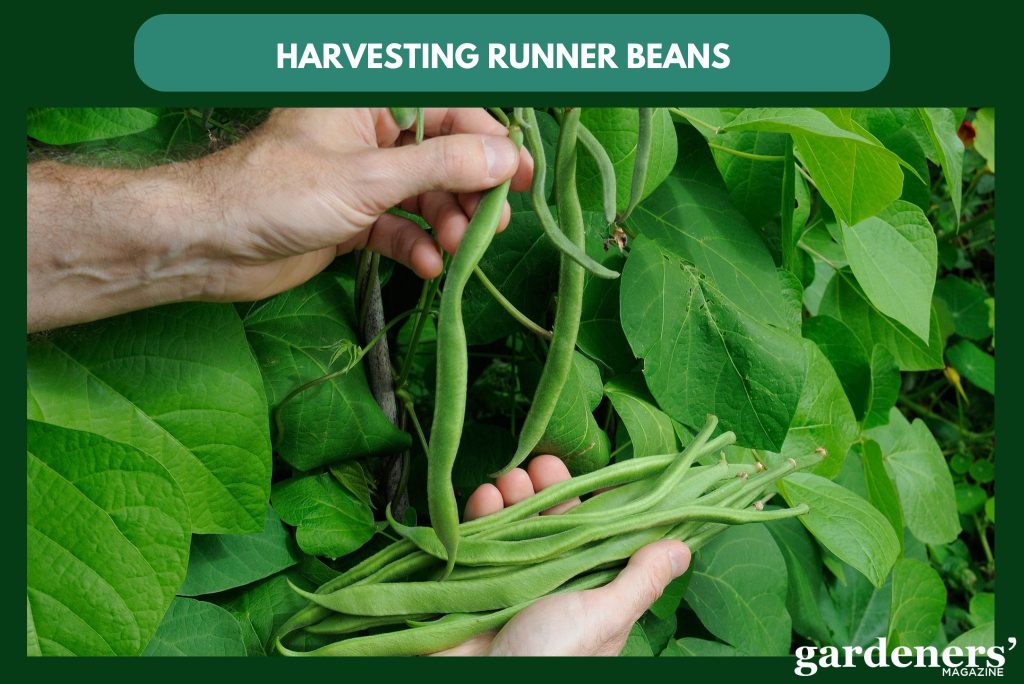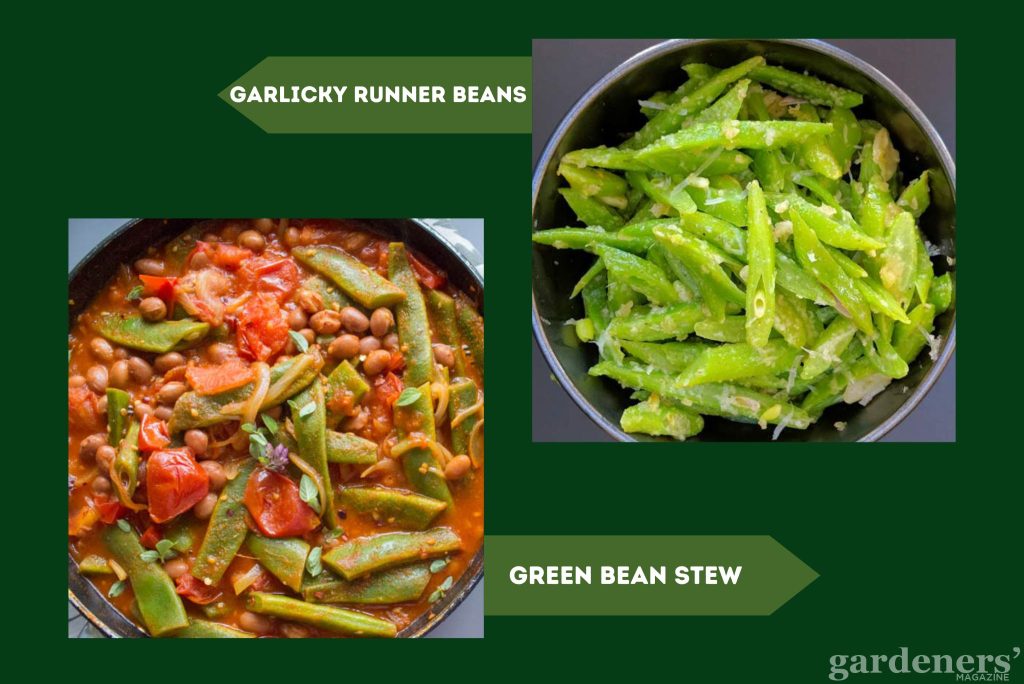Welcome to the world of runner beans, where vibrant foliage and prolific vines give rise to an abundance of tender, flavorful pods. Runner beans, scientifically known as Phaseolus coccineus, are a beloved member of the legume family cherished by gardeners for their ornamental beauty and culinary versatility. They are known for their bright red flowers and long, thin pods. They have been a popular European vegetable since the 16th century and are now grown worldwide. Runner beans are rich in protein, fiber, vitamins, and minerals, making them a healthy addition to your diet.
This article will explore the history of these beans, their nutrition profile, how to grow them, and some delicious recipes. Originating from Central and South America, runner beans have captured the hearts of gardeners around the globe with their stunning scarlet flowers and vigorous growth habits. As a gardener, exploring the cultivation and care of runner beans unveils a journey filled with lush foliage, pollinator-friendly blooms, and a bountiful harvest of crisp, succulent pods. Join me as we delve into the world of runner beans, sowing the seeds for a fruitful and rewarding gardening experience.
What are Runner Beans?
These are edible legumes belonging to the species Phaseolus coccineus. They’re native to Central and South America, but they’ve been cultivated in Europe since the 16th century and are now grown on every continent except Antarctica. They have bright red flowers and long, thin pods that can grow up to 30 cm long. The pods are picked when young for eating as green beans or left until mature so that their seeds can be used for drying and storing.
Runner beans are a member of the legume family, renowned for their vibrant scarlet flowers, lush foliage, and prolific growth. These climbing plants originate from Central and South America and have been cultivated for centuries for both their ornamental beauty and culinary value. As their name suggests, runner beans possess long, trailing vines that eagerly climb trellises, fences, or other supports, creating a stunning vertical display in the garden. Their showy flowers not only attract pollinators like bees and butterflies but also herald the arrival of a bountiful harvest of tender, flavorful pods. From sowing the seeds to harvesting the fruits, growing runner beans is a rewarding experience for gardeners, offering both aesthetic appeal and a delicious addition to the dinner table. With proper care and attention, runner beans flourish, providing a lush backdrop to the garden while yielding an abundant crop of crisp, succulent pods throughout the growing season.

History and Origin of Runner Beans:
Runner beans, also known as scarlet runner beans, have a rich cultural and botanical heritage dating back thousands of years. Originating from the mountainous regions of Central America, particularly Mexico, Guatemala, and Costa Rica, runner beans have been cultivated by indigenous peoples for centuries. Archaeological evidence suggests that they were one of the primary food crops cultivated by ancient Mesoamerican civilizations such as the Aztecs and Mayans.
These early civilizations not only valued runner beans as a nutritious food source but also revered them for their ornamental beauty and cultural significance. The striking scarlet flowers of runner beans held symbolic importance in religious ceremonies and rituals, representing vitality, fertility, and the cycle of life.
Runner beans made their way to Europe in the 16th century through Spanish explorers and conquistadors who encountered them during their expeditions to the New World. The popularity of runner beans continued to spread globally during the age of exploration and colonization, with European settlers introducing them to new regions such as Africa, Asia, and the Pacific Islands. Today, runner beans are cultivated in various climates and regions worldwide, appreciated for their aesthetic appeal, nutritional value, and versatility in both ornamental and culinary gardens.

Growing Conditions of Runner Beans:
They require a sunny spot in the garden with fertile, well-draining soil. The plants can be grown directly from seed or transplants. It is best to sow seeds directly into the ground when the danger of frost has passed, and this will need to be done in succession throughout the season for continuous production. Plant the seeds 1 inch deep in the garden, spacing them 12-18 inches apart.
Planting beans in a row will make harvesting easier. Water regularly and fertilize every few weeks with an all-purpose fertilizer to ensure healthy growth throughout the season. Runner beans are also heavy feeders, meaning they require more frequent fertilizing than other plants to maintain abundant production of pods.
Health Benefits of Runner Beans:
These are a nutrient-dense food, providing an excellent source of vitamins, minerals, and dietary fiber. They are rich in vitamins A, C, and K, as well as folate, potassium, magnesium, and iron, among other essential nutrients. They contain dietary fiber, which helps lower cholesterol levels and regulate blood sugar levels, reducing the risk of heart disease and diabetes. Additionally, their high potassium content helps maintain healthy blood pressure levels, further supporting cardiovascular health.
Runner beans are a good source of vitamin K, which plays a crucial role in bone health by supporting calcium absorption and bone mineralization. Adequate vitamin K intake is associated with a reduced risk of osteoporosis and fractures. They contain various antioxidants, including flavonoids, phenolic compounds, and carotenoids, which help neutralize harmful free radicals in the body. Antioxidants protect cells from oxidative damage and inflammation, reducing the risk of chronic diseases such as cancer and arthritis.
Where are Runner Beans Grown and Harvested?
Runner beans are primarily grown in tropical and subtropical climates, such as Mexico, Central America, the Caribbean, South America, Africa and Asia. They can also be grown in cooler regions with a long growing season. Runner beans are harvested when they reach maturity; on average, this takes between 70 and 100 days from sowing. The pods should be picked when they reach the desired size and before the seeds inside become too large.
The older pods will become tough, woody, and inedible. If there is a risk of frost, then runner beans can be harvested slightly earlier to ensure their quality. It is best to harvest them regularly – pick them every few days or so – to ensure a continual harvest.
They thrive in the Pacific Northwest, particularly Oregon and Washington, due to their mild maritime climates and fertile soils. California’s coastal areas and inland valleys also support successful cultivation. In the Northeast, including New York and Pennsylvania, and the Midwest, such as Michigan and Illinois, runner beans are grown in areas with suitable conditions, albeit less extensively. These regions offer adequate warmth, sunlight, and soil fertility for runner bean production, despite varying climates. While not as widespread as other bean varieties, runner beans are cherished by gardeners and small-scale farmers for their ornamental beauty and culinary versatility.

Cooking Runner Beans:
Runner beans are a great way to add some extra nutrition and flavor to your favorite dishes. They can be cooked with other vegetables and fruits for a delicious, nutritious meal.
For starters, you can always cook runner beans with potatoes or carrots. This classic combination will provide plenty of flavor and make for a filling dish. You could also try adding some diced apples or pears to the mix for a little sweetness and texture.
Another way to enjoy them is with bell peppers, onions, and garlic. This trio of flavors creates an amazing dish that’s bursting with flavor. You could also add in some diced tomatoes for extra acidity and color.
If you’re feeling adventurous, try adding runner beans to a stir-fry. The beans can be cooked with vegetables and your favorite protein for a delicious meal. You could also try adding runner beans to soups or stews for a flavorful twist on these classic dishes.

Storing Runner Beans:
Runner beans can be stored in the refrigerator for up to 5 days in an airtight container. Alternatively, they can be blanched and frozen for several months. Ensure to cook them before eating after frozen, as freezing may reduce their texture and flavor. If you have too many runner beans, consider preserving them by pickling or making chutney. This is a great way to enjoy your runner beans all year round.
You can also preserve runner beans by canning them using a pressure canner. Canned runner beans can be stored in a cool, dark place such as a pantry for up to 1-2 years. Choose the storage method that best suits your preferences and needs, ensuring proper handling and processing to maintain the quality and safety of the runner beans.
Conclusion:
Runner beans are an incredibly versatile and delicious vegetable with a unique earthy and nutty flavor. They can be used in many hot and cold dishes, making them an ideal ingredient for any occasion! From a simple side dish to an elaborate main course, runner beans will surely add great flavor. With proper storage, you can enjoy them even longer. So go ahead and enjoy these tasty legumes – your taste buds will thank you!
- Dino Melons: Description, Flavor, Benefits, And Uses - April 29, 2025
- Pear Trees: Planting, Growing, and Harvesting Pears - March 27, 2024
- Runner Beans (Scarlet Runner Bean): Description, Flavor, Benefits, And Uses - March 21, 2024

5 thoughts on “Runner Beans (Scarlet Runner Bean): Description, Flavor, Benefits, And Uses”
Comments are closed.